Since the invention of the Internet, blogging has been a popular tool and activity used by many to create a sense of community online and share what they are passionate about with the world.
Pet blogging is a niche area of blogging where pet owners and pet enthusiasts share blog posts about their pets, exchange advice on being a pet owner, and write about topics related to pets that are interesting to them.
Lately, pet blogging and other types of blogging have become more marketable and easily monetized with the right tools.
Continue reading for a deep dive into becoming a pet blogger and what it takes to keep it going.
Basics of Pet Blogging
First, we should establish what pet blogging is, how it works, and the types of pet blogs there are.
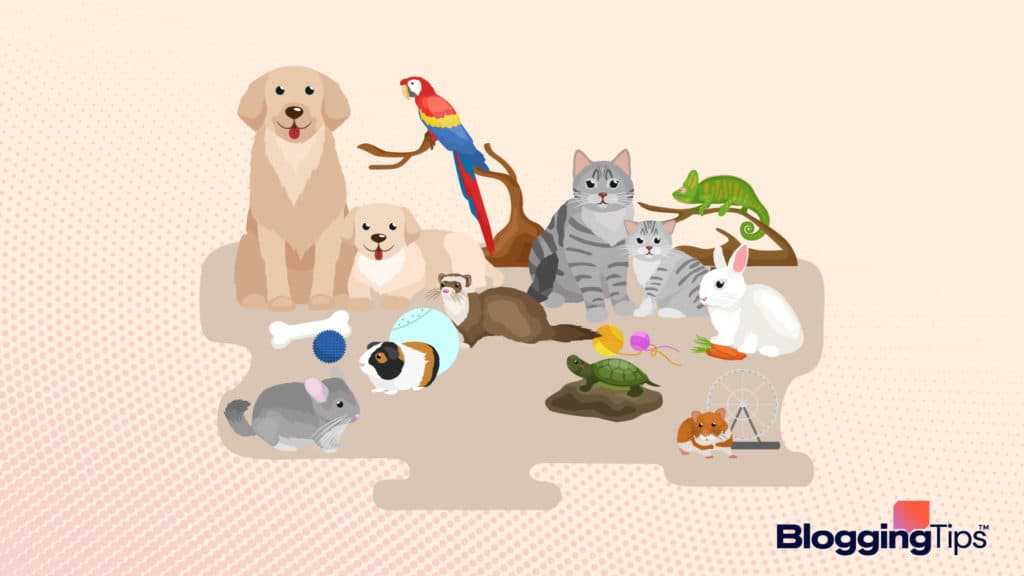
What is Pet Blogging?
Blogging is defined as an internet practice where personal reflections, comments, hyperlinks to products, videos, and photographs from the writer for the enjoyment of their readers are published.
It is similar to an online diary with much more factual and helpful information.
Pet blogging follows the same model, but it is all about pets!
They often cover pet health, pet safety, pet care tips, senior dogs, pet products and more.
Bloggers find their niche and stick to it so they can focus on a specific topic and provide helpful tips.
There are many ideas for a pet blog you can turn to for inspiration.
How Does Pet Blogging Work?
Like other blogs, pet bloggers should follow the same steps to set up their blog, decide on their niche, and use affiliate links to make money through the site.
Pet blogging is like traditional blogging, but the focus is on a pet-related topic.
Types of Pet Blogging
As the internet expanded, pet bloggers have expanded to cover more bases than just a traditional blog about their favorite furry friend.
There are three main types of blogs in the pet blogging world.
1. Traditional Blogging Websites
Traditional blogging websites are solely web-based pet blogs.
They have their domain name.
They write about pet topics, whether it is a specific pet or breed, or they give pet tips on being a pet parent.
2. Product Review Websites
Product review pet blogs are dedicated to creating helpful reviews of popular pet products for a variety of household pets.
These products generally include food, treats, and auxiliary toys or gear.
3. Social Media Accounts
With the rise of social media sites like Instagram and TikTok, pet bloggers have taken to these channels to support their traditional blogs or to create a social media-only blog.
These accounts feature pet influencers who focus on pet products, pet safety, and other content.
Social media is the cheapest of the three types to run since all social media platforms are free, so there is no upfront cost or maintenance cost unless you eventually hire a social media manager.
The Details on Pet Blogging
Now that you are familiar with the basics, let’s cover a few important details on pet blogging.
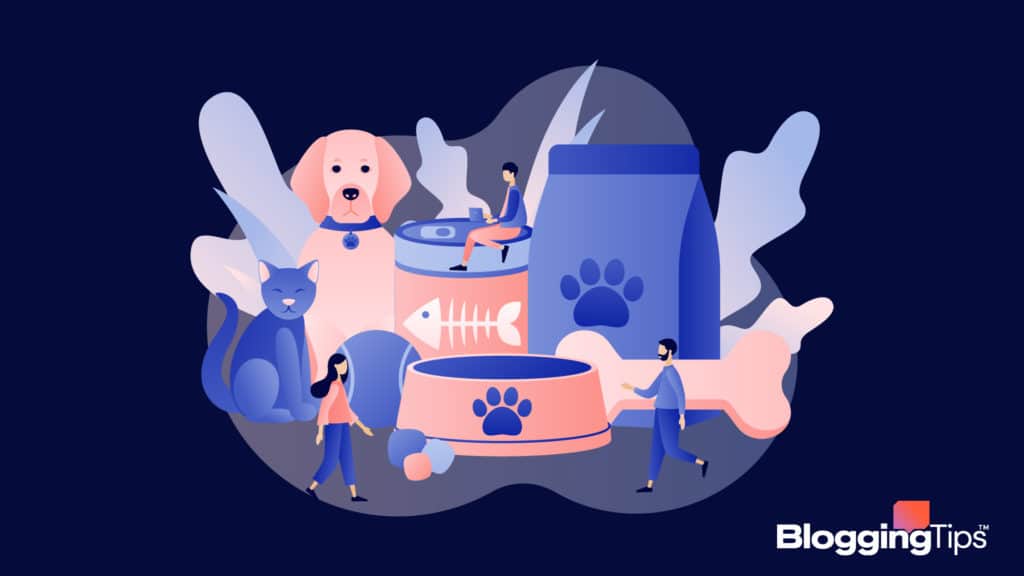
Benefits of Starting a Pet Blog
You may be wondering if there are any benefits to starting a pet blog.
The short answer to this is: Yes!
The intangible benefits of starting a pet blog include community, enjoyment in writing, and education on pet care.
The tangible perks of blogging are receiving free products from brands, earning money from your blog, and meeting your readers in person.
Is Pets a Profitable Niche?
Overall, pets are a profitable niche when it comes to blogging.
Though the blog market is heavily saturated, there are many types of pets and breeds of pets, so you can likely find a niche that is not covered yet to focus on.
How Much Do Pet Bloggers Make?
With all this money talk, you might be wondering how much bloggers make.
A blogger makes about $37,073 per year, according to Indeed.
A salary like this is consistent with other jobs on the market, so it is not a big step down for many people.
Though there is an opportunity to make money off a blog, remember that effective monetization strategies are the key to making money on a blog.
How Do You Monetize a Pet Blog?
Monetizing a pet blog is a lot like monetizing any other blog.
You can use programs like AdSense, a program run by Google, to make money with your online site.
You can also sign up for pet-related affiliate programs where you can make money every time someone uses your code for a product or clicks through your link to visit a manufacturer’s website.
Being a part of an affiliate program is how you participate in affiliate marketing and reap the benefits.
Another way to make money off your pet blog is to create merchandise for your followers to purchase.
Only do this once you have a large enough following that you know you will turn a profit on your merch.
Once you establish yourself in pet blogging, you might have brands reach out for a sponsored post or video.
You can make money or receive free products by working with a brand this way!
Who Pays Pet Bloggers?
In all of these examples presented, someone is paying the bloggers, but who?
When it comes to affiliate programs and sponsorships, the brand or company pays the blogger directly.
In the case of selling merchandise, your audience is paying you.
With AdSense, you get paid through that company on a periodical basis.
The amount depends on how well your ads reach your audience.
Examples of Successful Pet Blogging
Though the process of pet blogging sounds daunting.
It sounds more intimidating to start making money off it, but here are a few successful pet blogs that are currently active to look to for inspiration!
1. Walkin’ Pets Blog
Walkin’ Pets Blog educates pet owners who have disabled or otherwise impaired pets.
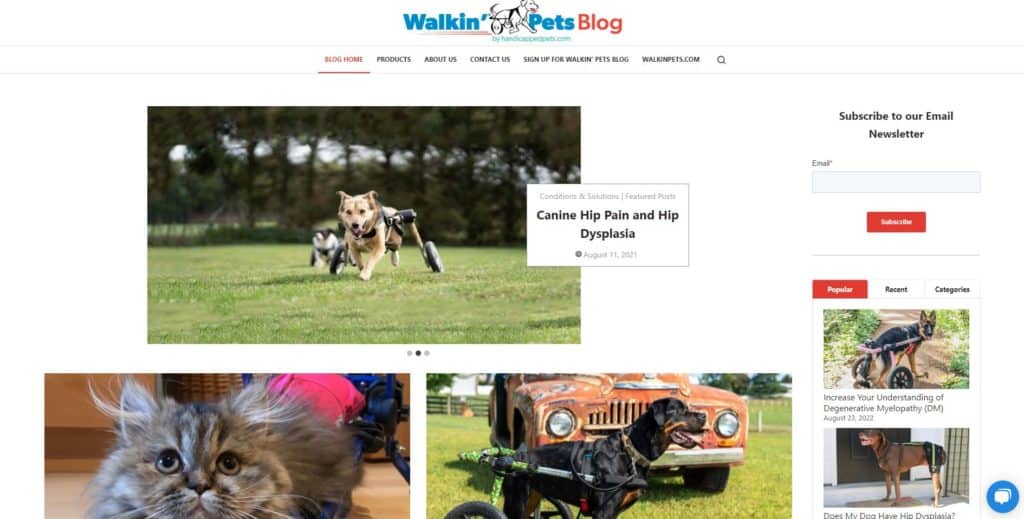
They are a big monetary success since many blogs have links to products on the Handicapped Pets online store.
They also have a strong community of readers.
2. Adopt a Pet
Adopt a Pet focuses on informing new or prospective pet parents on how to best care for adopted pets from shelters and other situations.
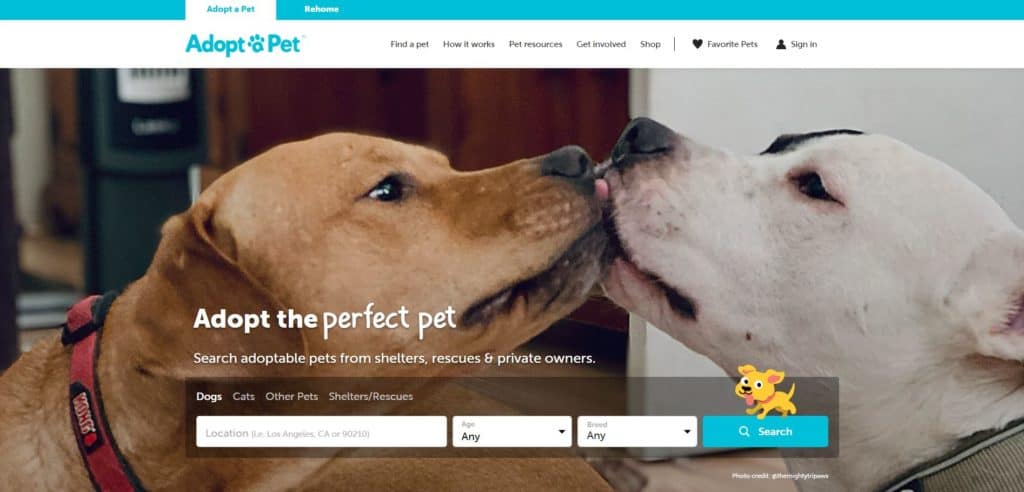
It is a non-profit organization with a huge following!
3. PetKeen
PetKeen offers tips and tricks to help you better care for your pet, but what sets them apart is that they have information on all kinds of household pets beyond cats and dogs.
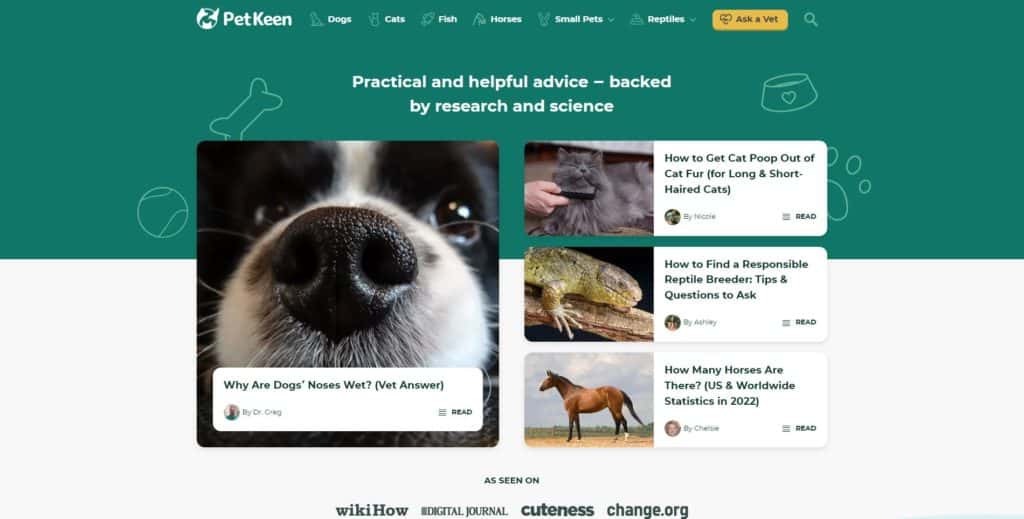
They have experienced vets on staff and make their money by participating in affiliate marketing and pet product reviews.
4. GoPetFriendly
GoPetFriendly‘s niche is the travel industry.
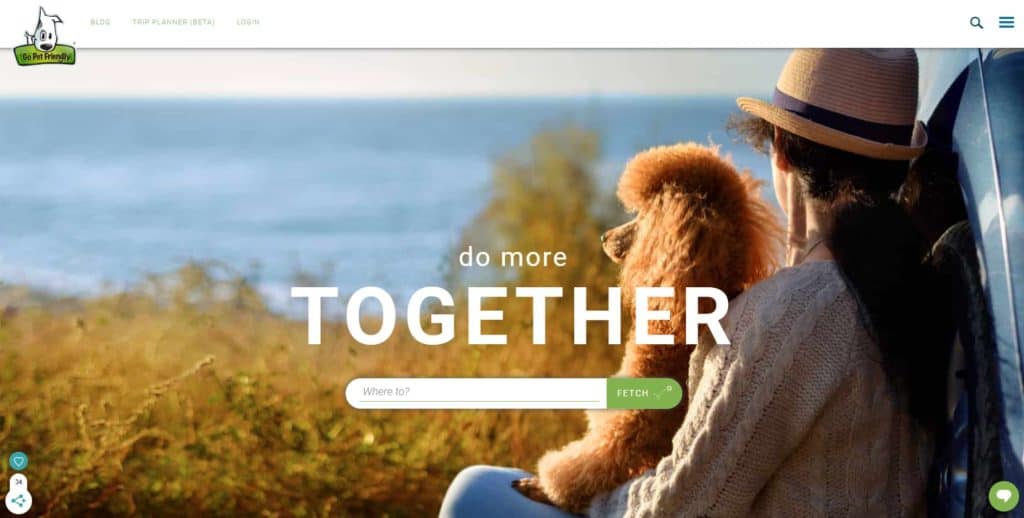
Traveling with a pet is tricky, and this blog helps you understand where you can go, what you can do, and how you can make the most of your trip with your beloved pet.
They sell advertising space on the site to make the bulk of their capital.
5. Dog Food Advisor
As the name suggests, Dog Food Advisor is a blog dedicated to helping dog owners find the most up-to-date information on dog food including reviews and scientific research on various food types.
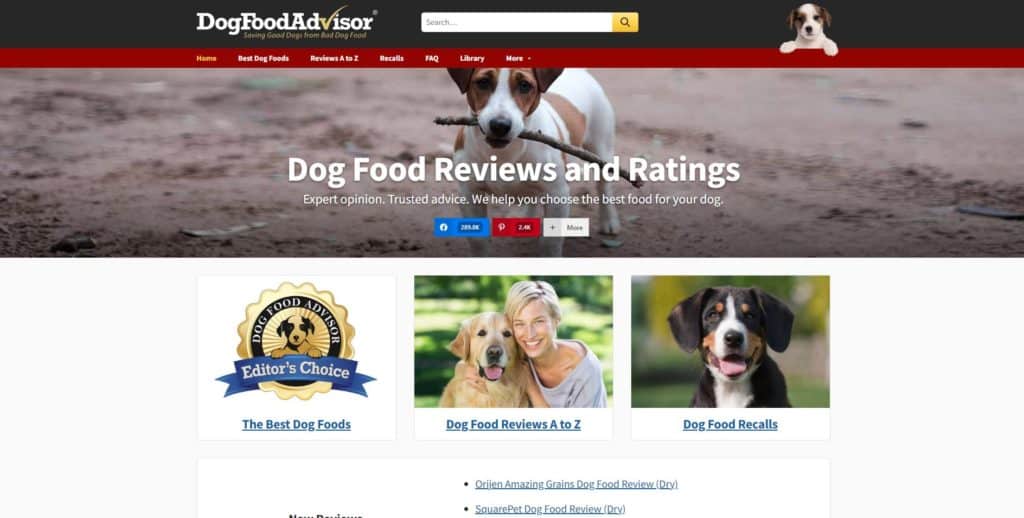
They bring in hundreds of thousands of visitors per month, so they can monetize their site through reviews and affiliate links easily.
How Do I Become a Pet Blogger?
With all this information, you might wonder, how do I put these helpful tips into action?
What is Needed to Start a Pet Blog
The only things you need to start a pet blog are a computer, a niche, and a love for pets!
The Steps Required to Start a Pet Blog
Here is a blog checklist you should follow before starting your pet blog:
- Register a Domain
- Get Hosting
- Install WordPress
- Design and Build Your Blog
- Create Content for Your Pet Blog
- Sign Up For Affiliate Programs
How Do You Grow a Pet Blog?
Here are five common ways to grow your pet blog:
- Identify Your Audience
- Keep the Content Interesting
- Make and Stick to a Business Plan
- Meet Other Bloggers
- Build Relationships with Companies
Frequently Asked Questions
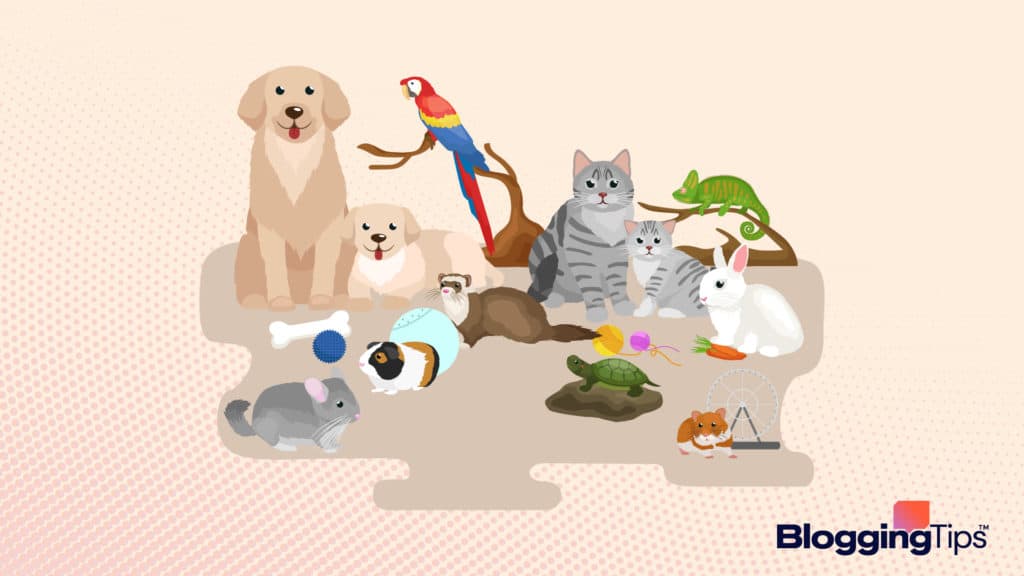
Do pet Instagrams make money?
Pet Instagrams and pet influencers can make money similar to how traditional Instagram influencers make money.
It is all about content, engagement, consistency, and sponsorships.
How do you monetize your pet?
If you have a pet, using photos and videos of them to generate content is the perfect way to monetize them.
You can also use them for sponsored content.
Wrapping Up
Creating a pet blog is a lot of work, but rewarding if you enjoy pet life!
Follow the logistical steps to create your blog, then start writing.
Staying consistent with your content and sponsorships is the best way to eventually monetize your content.
Establish your blogging goal and you will be happy with where it goes.




